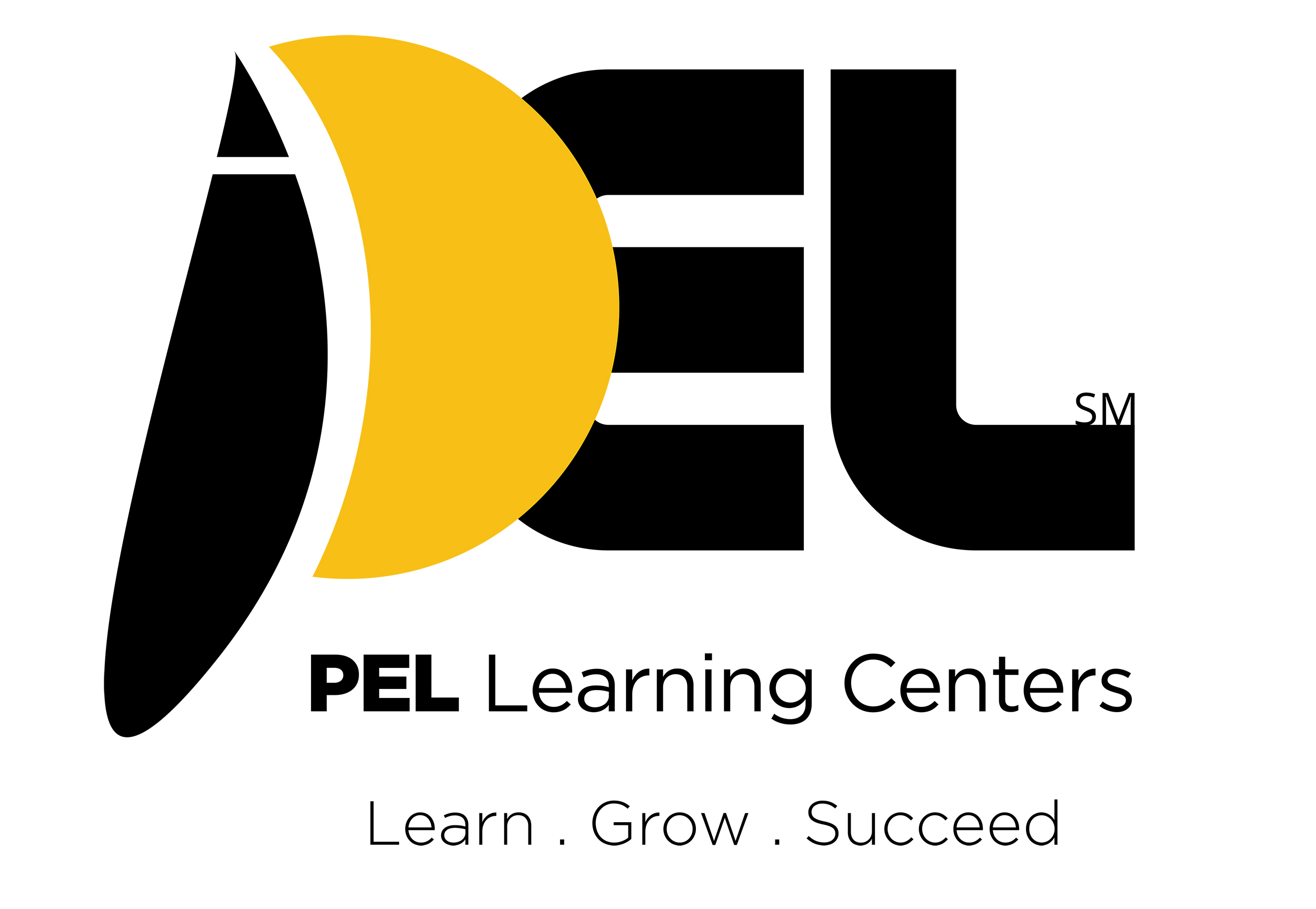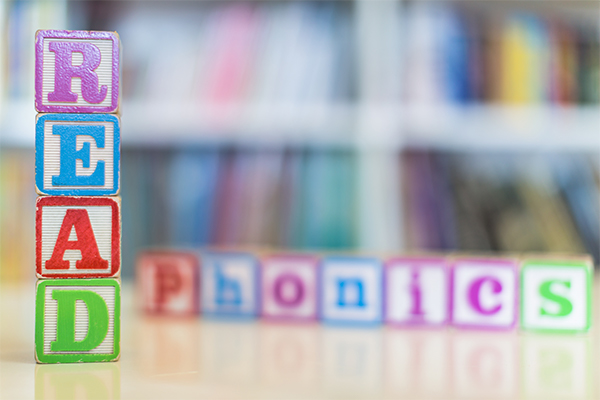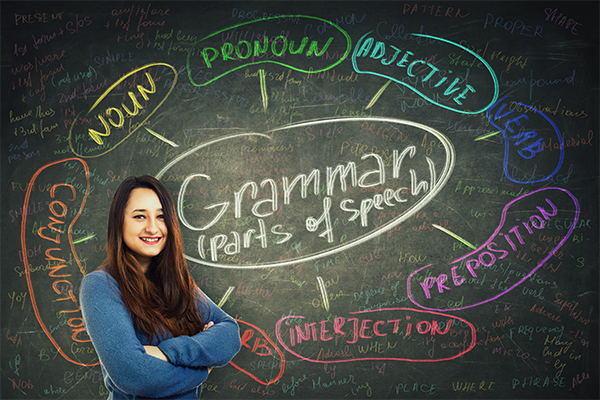Our comprehensive English Language Arts program is designed to enhance your child's skills in three key aspects: Phonics, English Language Arts, and Writing. With a focus on building strong literacy foundations, fostering critical thinking, and honing writing abilities, PEL Learning provides a well-rounded educational experience that empowers students to excel in the English language. Explore our program today to discover how we can help your child unlock their full linguistic potential.
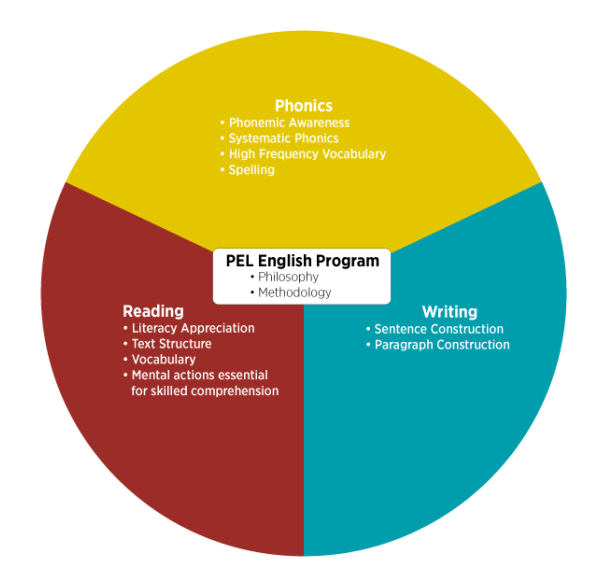
Phonic
The Phonic section of the English program is based on “The Spalding Writing Road to Reading” method. Spalding’s comprehensive, explicit, interactive, diagnostic, multi-sensory and integrated language arts program addresses the State Standards, No Child Left Behind (NCLB), Reading First and the National Reding Panel instructional components in the following ways:
1) Phonemic Awareness
- By identifying, segmenting, counting, and blending sounds in high–frequency words.
- By recognizing initial, middle, ending, same, and different sounds in written and spoken high-frequency words.
2) Systematic Phonics
- Uses systematic approach; oral and written phonogram reviews to help students master 70 phonograms.
- Equips students to spell accurately and to decode unfamiliar words by applying phonics skills to reading text.
- Employs spelling dictation to equip students to segment, decode, blend high frequency regular and irregular words and to spell accurately by applying phonics skills to reading text.
- Connects speech to print with a unique and time-tested marking system.
- Provides opportunities to apply newly learned and reinforced phonics skills through reading words by sound or syllable.
3) High-Frequency Words & Spelling
- Uses the phonograms to teach how to say, write and read high-frequency words.
- Learn to spell words by applying phonograms and the twenty-nine rules that govern pronunciation, spelling, and language use.
- Extends vocabulary through use of quality literature and extensive independent reading.
4) Fluency
- Develop automatic word recognition as students read new words used in normal speech which is a prerequisite for reading text fluently with comprehension.
- Providing specific and immediate feedback as students read orally to develop accuracy, proper expression, intonation, speed, and fluency in daily reading exercise.
5) Text Comprehension
- Teaches vocabulary as well as usage and meanings.
- Students develop comprehension while reading.
- Students make connections between prior knowledge and text.
“The Spalding’s Writing Road to Reading is a total language arts method that captures all the richness and variety of the English language. For over fifty years, classroom teachers across America have found that it works with all students …… I enthusiastically endorse The Spalding Method because I know that if it was taught in every classroom, illiteracy would vanish.”
-Robert Sweet, Former professional staff member, Committee on Education and the Workforce, United State Congress
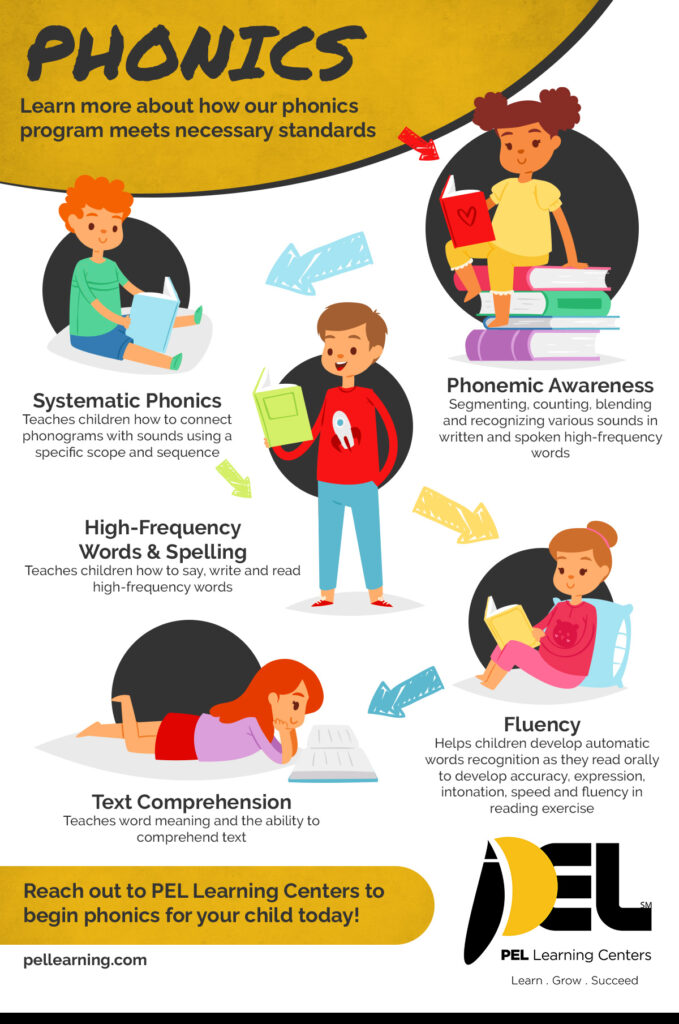
English Language Arts
The four components of the English program essential for comprehension are: literacy appreciation, text structure, vocabulary and mental actions for comprehension.
1) Literacy Appreciation
Literature is carefully chosen to foster the desire and interest to read. In EG levels, study materials are engaging and motivating. They are aligned with the spirit of the common core standard, featuring topics related to geography, history and science. In the EM and EH Levels, classics that have attracted readers for generations are being featured.
Five attributes of fine literature are being incorporated into the study materials:
- Precise language.
- Emotional appeal – power to touch the heart; content – provide diverse knowledge and supply a storehouse of practical wisdom with which to confront unforeseen difficulties.
- Insight – dialogue and situations enable readers to discern implied main ideas, a character’s motives and desires, and rewards or consequences of different kinds of behavior.
- Universality – enjoyed by readers across time and culture.
- Help us understand ourselves.
2) Text Structure
Grammar is explicitly introduced: subject & predicate, nouns, pronouns, adjective, punctuation, tenses, subject-verb agreement, etc.
3) Vocabulary
In the EK and EG levels, the vocabulary list is based on the most frequently used words compiled by Dr. Ayres. Prefixes, suffixes, Latin and Roman root words are introduced in EM and EH levels.
4) Comprehension
Reading comprehension techniques as recommended by The Report of Reading Panel 2000 are incorporated in the English program:
- Actively connect ideas in print to their prior knowledge and experiences.
- Construct mental representations.
- Use cognitive strategies.
- Use reason strategically when their comprehension breaks down.
The program also uses a multiple-strategy method including use of graphic and semantic organizers, retelling, posing questions, use of story structure, summarization, identify stated main ideas or derive implied main ideas etc.
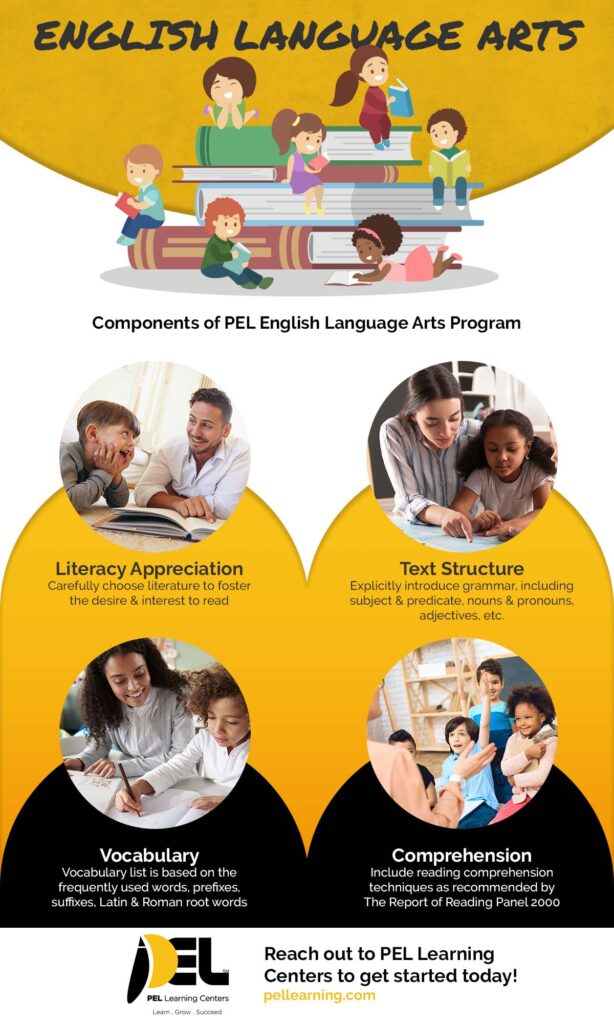
Writing
The English Program incorporated the following features which will strengthen the writing skills of the students:
- Logical thinking, precise selection, and correct ordering of words to convey meaning accurately.
- Understanding of grammar, syntax, sentence construction, paragraph construction & summarization.
